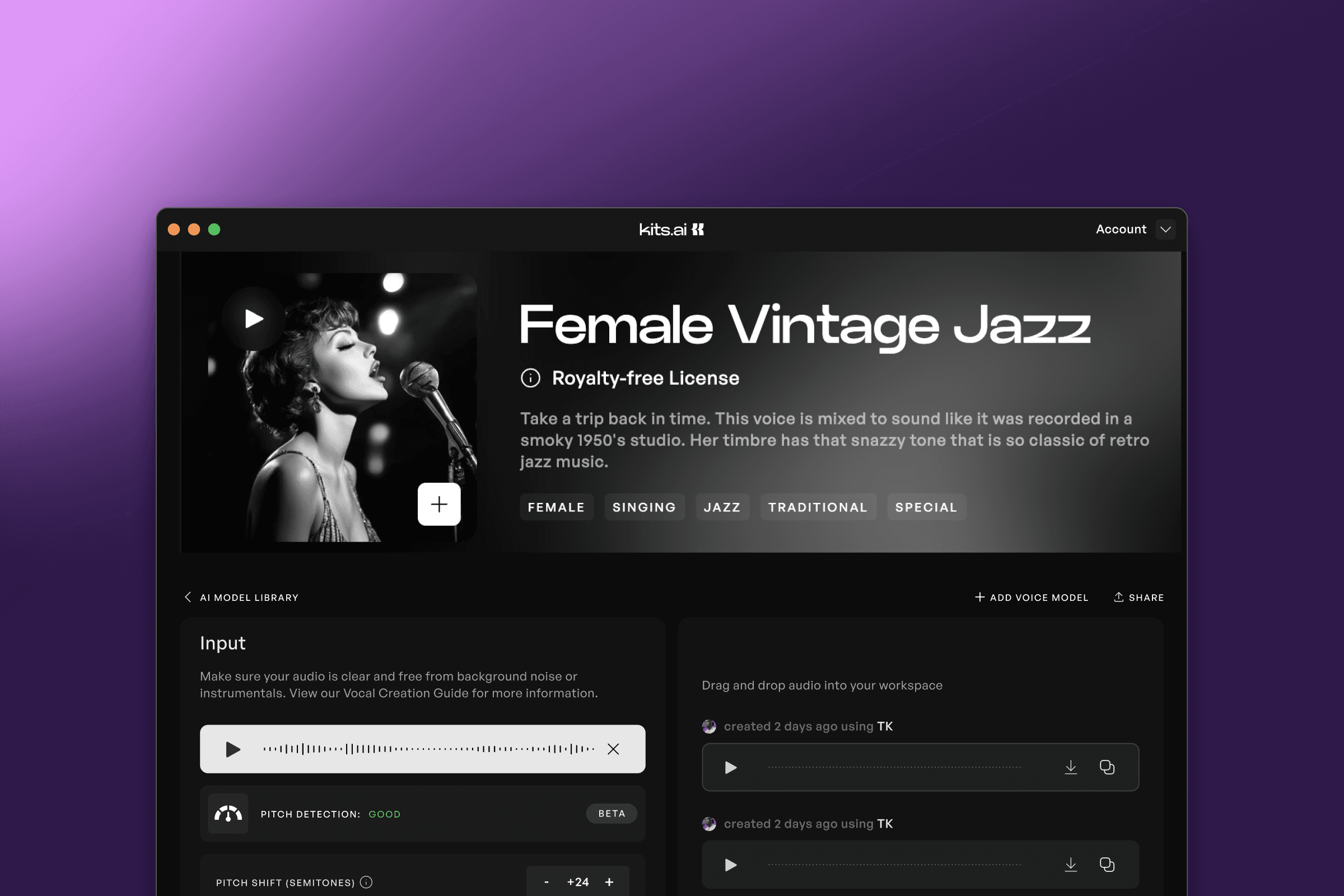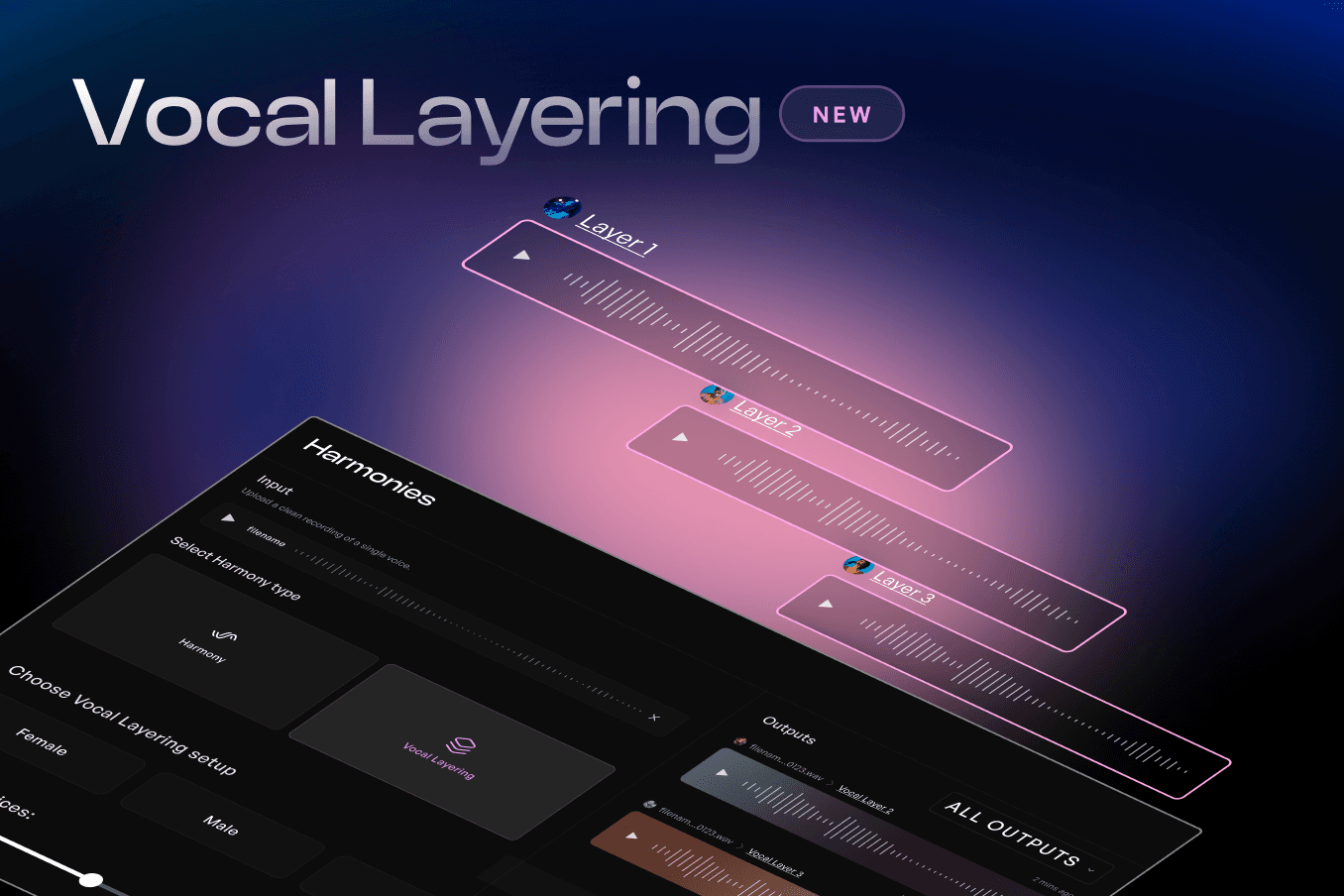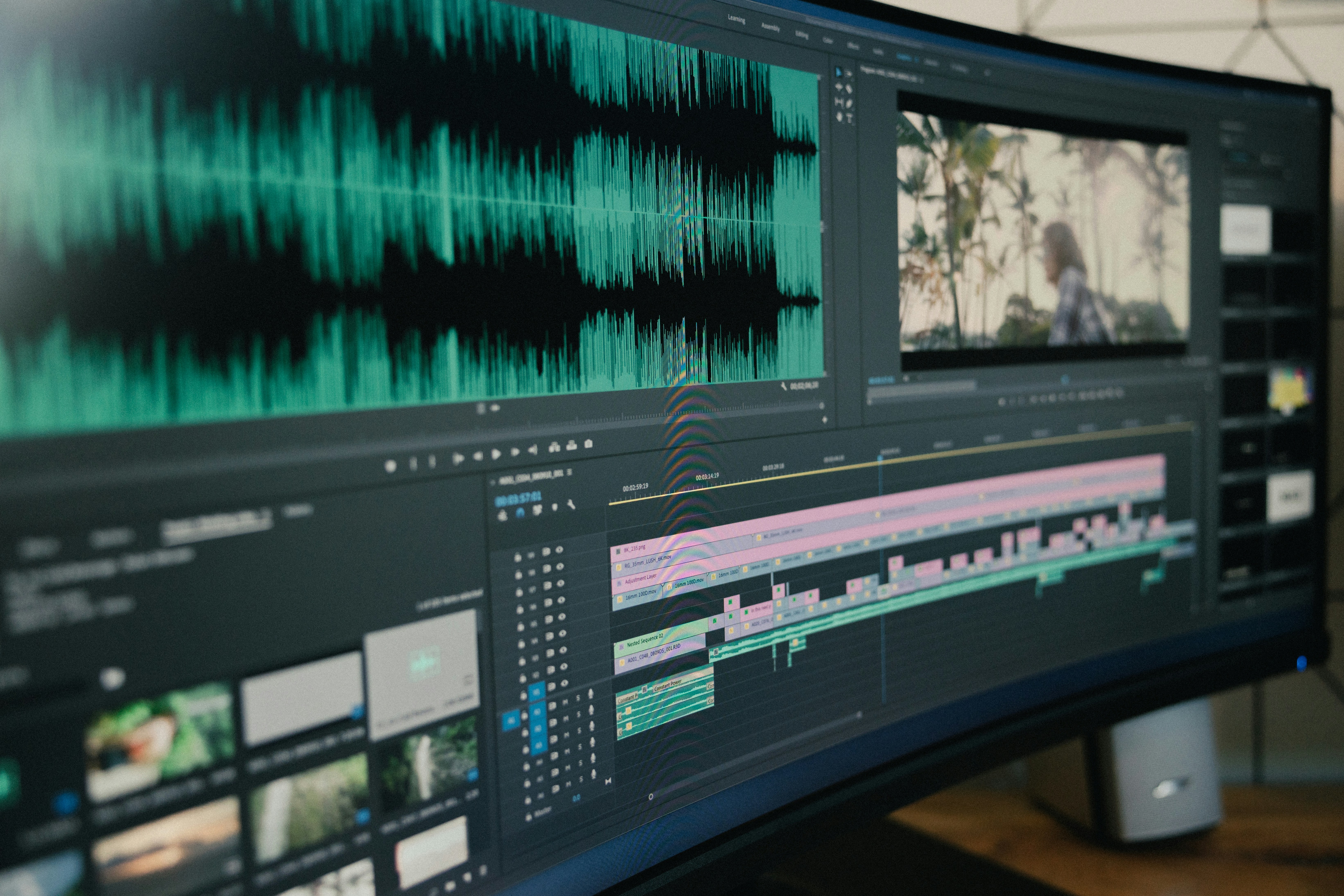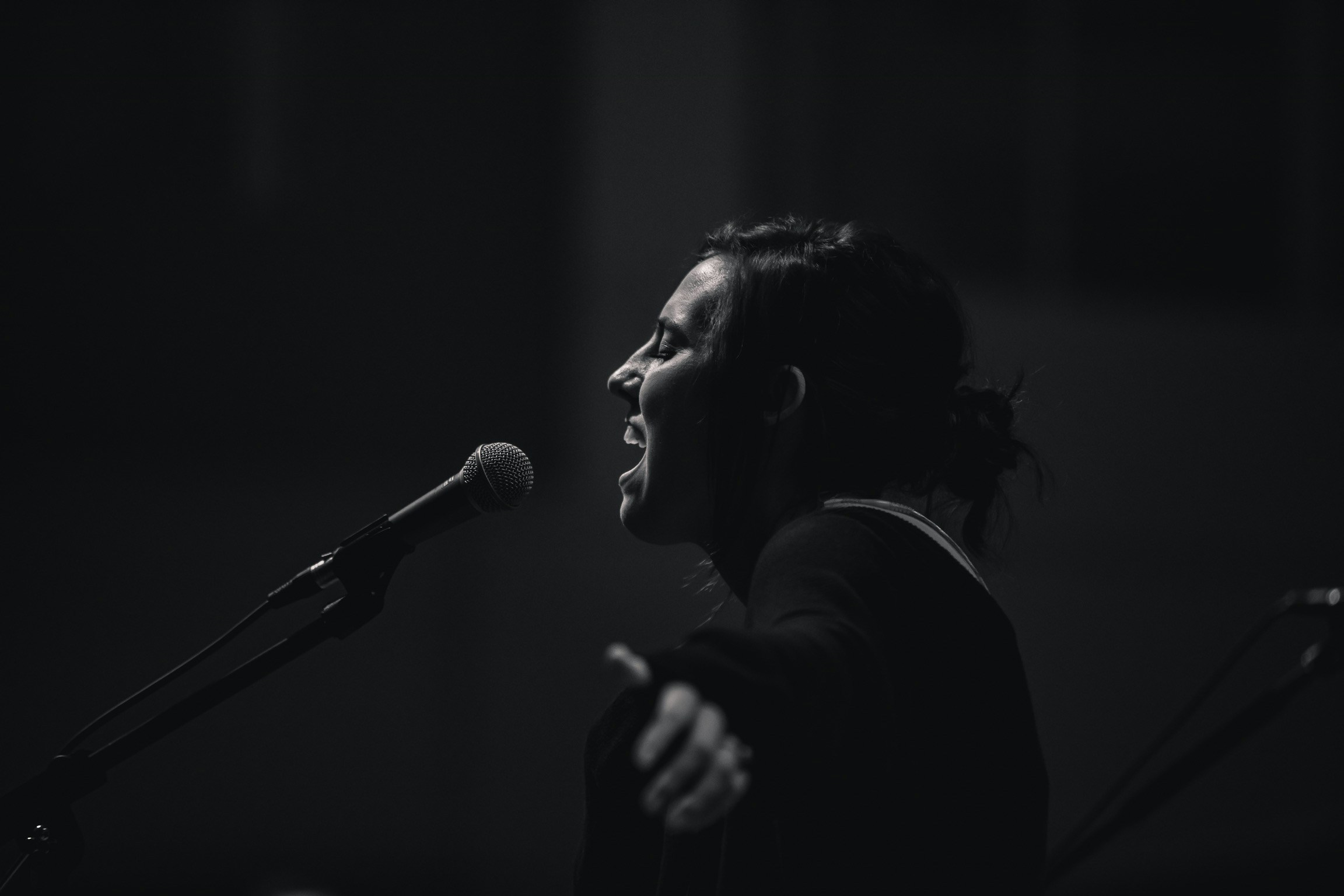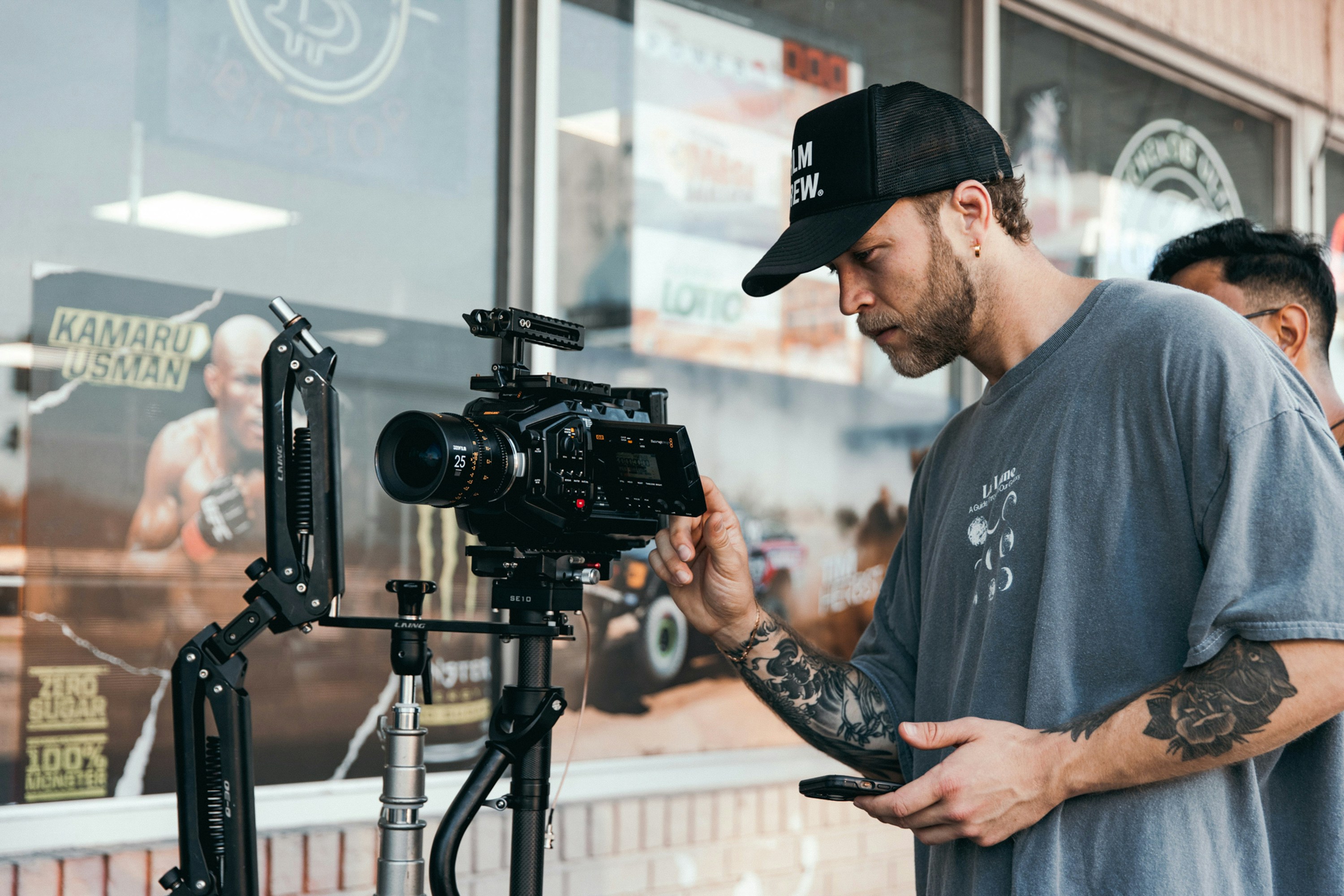Techniques For Creating Your Own Vintage Voice Model
Written by
Published on
October 9, 2024
Let’s talk vintage vibes, folks! Kits just dropped a brand-new voice model inspired by the warm, soulful sound of early jazz recordings. I’m talking rich, velvety tones that could transport you straight to a smoky New York jazz club from the golden era. And guess what? I made it! Meet Female Vintage Jazz. This model captures the essence of that era, and today, I’m pulling back the curtain on how it all came together. My goal here isn’t just to geek out over vintage gear (though that’ll definitely happen), but to show you how thinking outside the box–whether analog or digital–can help you craft something truly unique.

Buckle up, we’re diving deep into a world of ribbon mics, tubes, and some seriously cool sonic mojo.
A Little History Lesson
The first half of the 20th century? Yeah, it was kind of a big deal. Sure, there was some heavy stuff–two world wars, the Great Depression, and the rise of a few too many dictators–but hey, not all doom and gloom! This was also the golden age for technological breakthroughs. Innovations in transportation, atomic energy and the rise of radio and TV revolutionized everyday life. And with those shiny new mediums came even shinier new recording tools.
Back then, engineers worked with ribbon microphones, tube preamps, and analog tape, often in conditions that would make today’s sound engineers cringe. By modern standards, many of these tools might not be considered the peak of modern fidelity. But here’s the kicker: these tools had character, and many survived years of continued industry progress. People fell in love with the sonic fingerprint they left on classic recordings–and those warm, unique tones have stood the test of time, passed down through generations.
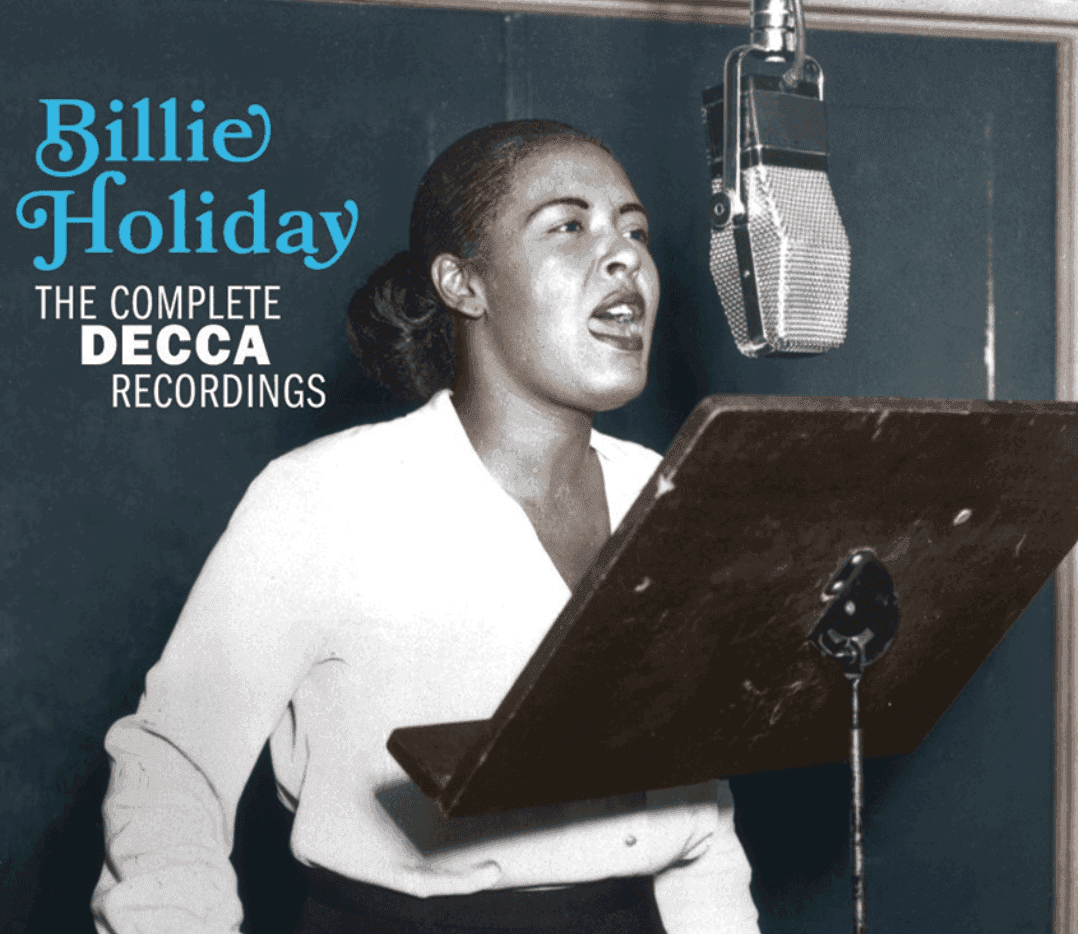
Billie Holiday recording with a RCA 44 ribbon microphone.
During the golden age of jazz, vacuum tubes (also known as valves) were a fundamental part of audio equipment, including microphones, amplifiers, and recording consoles. Ribbon microphones such as the RCA 44 (pictured above) were commonly used during this period and paired with tube preamps to amplify the signal. These ribbon mics had a smooth, warm sound, and the tube electronics of recording consoles contributed to their characteristic rich tonal quality.
For this vintage voice model, I wanted to get as close to that sound as possible. So, I went full analog–and let me tell you, it was a blast!
My Process: Going Full Analog (Because Why Not?)
Here’s how I recreated the vintage vibe:
Microphone
Just like Billie Holiday recording with an RCA 44, I set up a mic in front of one of my trusty studio monitors, pretending it was my jazz singer for the day. Using a heavy-duty stand (needs to support a tank!), I set up a modern reproduction of this 44-style ribbon mic–built by the fine folks at AEA, who painstakingly reproduce these microphones to the exact specs of the originals. If you’re on a budget, there are solid options from Warm Audio and Pinnacle that won’t break the bank.
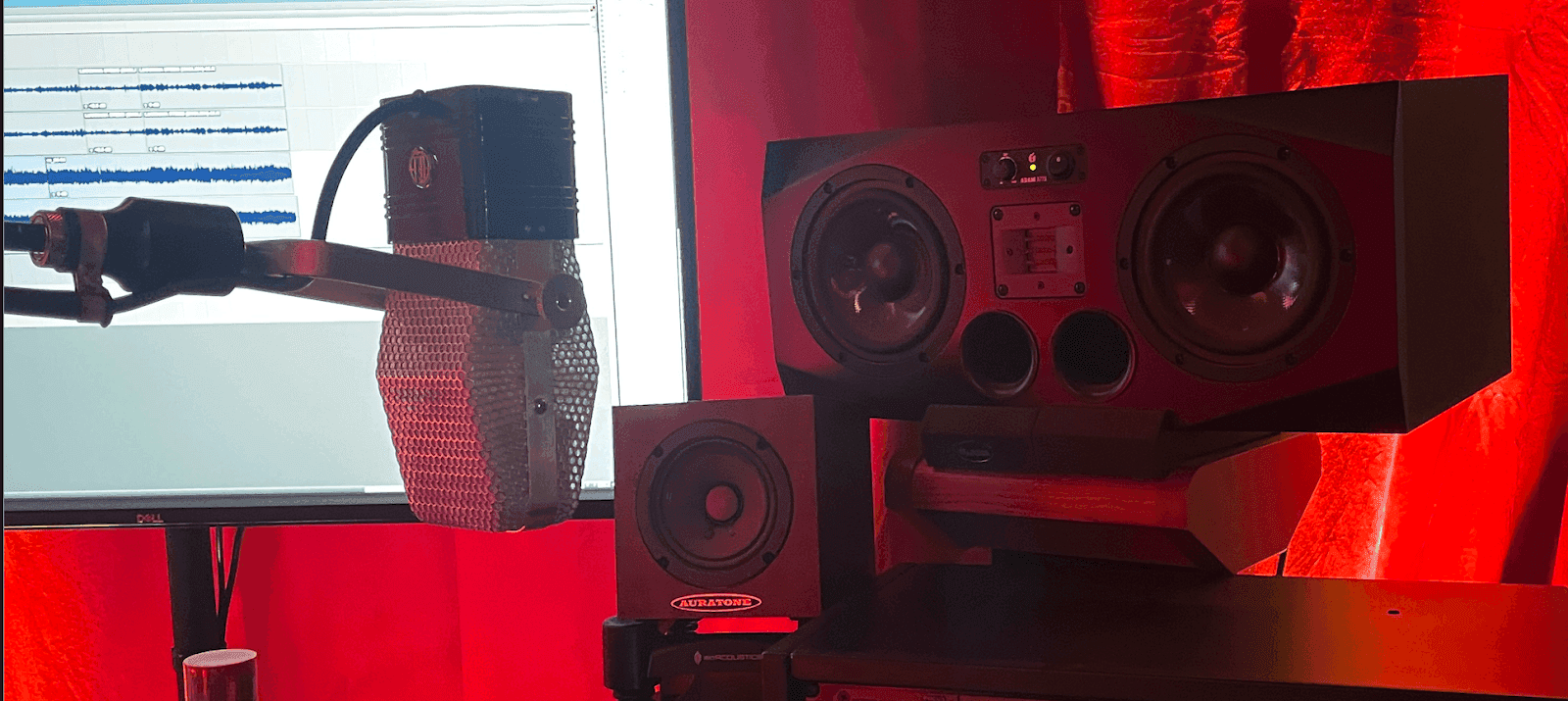
Preamplification
Sadly, I don’t have a vintage tube preamp collection lying around (a guy can dream), but I do have a Chandler REDD.47. This bad boy is based on the EMI unit used at Abbey Road Studios in the ‘60s. It’s not exactly what Billie and crew used, but it’s got that same creamy, rich tube tone.

De-essing
Ribbon mics already have a naturally smooth top end, but to really hammer home that vintage vibe, I threw on a de-esser to tame even more of the high frequencies and further accentuate that old-school tone. No sibilance is sneaking past me!

Saturation
To add that extra harmonic warmth, I ran the signal through an Overstayer Saturator. For my in-the-box friends, the Soundtoys Decapitator is a killer alternative.

Compression
Usually, I’m an “EQ before compression” guy, but after watching this interview with super-producer Joe Chiccarelli, I flipped the script and refined the overall sound after shaping the dynamics. Vari-Mu compressors like the Gates STA-Level, and later the Fairchild 670, provide smooth and gradual compression. Though more commonly used on the mix bus, the same character can be found with the Manley Vari-Mu tube compressor.

EQ
First released in 1951, the Pultec EQP-1A is a legendary tube equalizer that continues to be a staple in modern studios to this day. Its unique design allowed engineers to both boost and cut the same frequencies, creating some seriously smooth EQ curves. I used my Retro Instruments 2A3, a stereo unit based on the classic Pultec design, to clean up the low-end and gently trim the highs for a balanced, polished sound.

Tape Delay
Next up, I ran the signal through a Roland SpaceEcho, overdriving the input to add that authentic tape warmth.
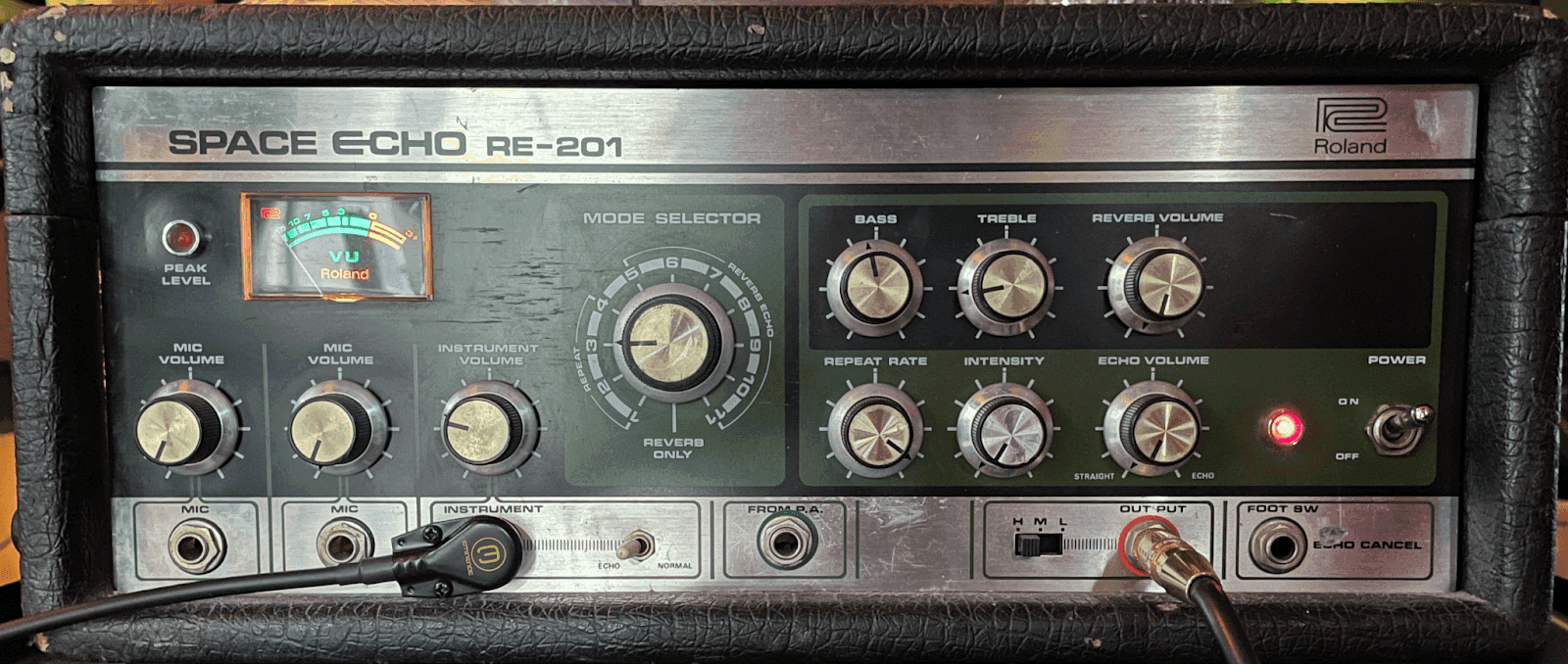
Looking For More Saturation?
To further enhance the vintage vibe (I know, I know…don’t we have enough vibe?!), a little Bereich03 Density did the trick, subtly adding more tape-style saturation.
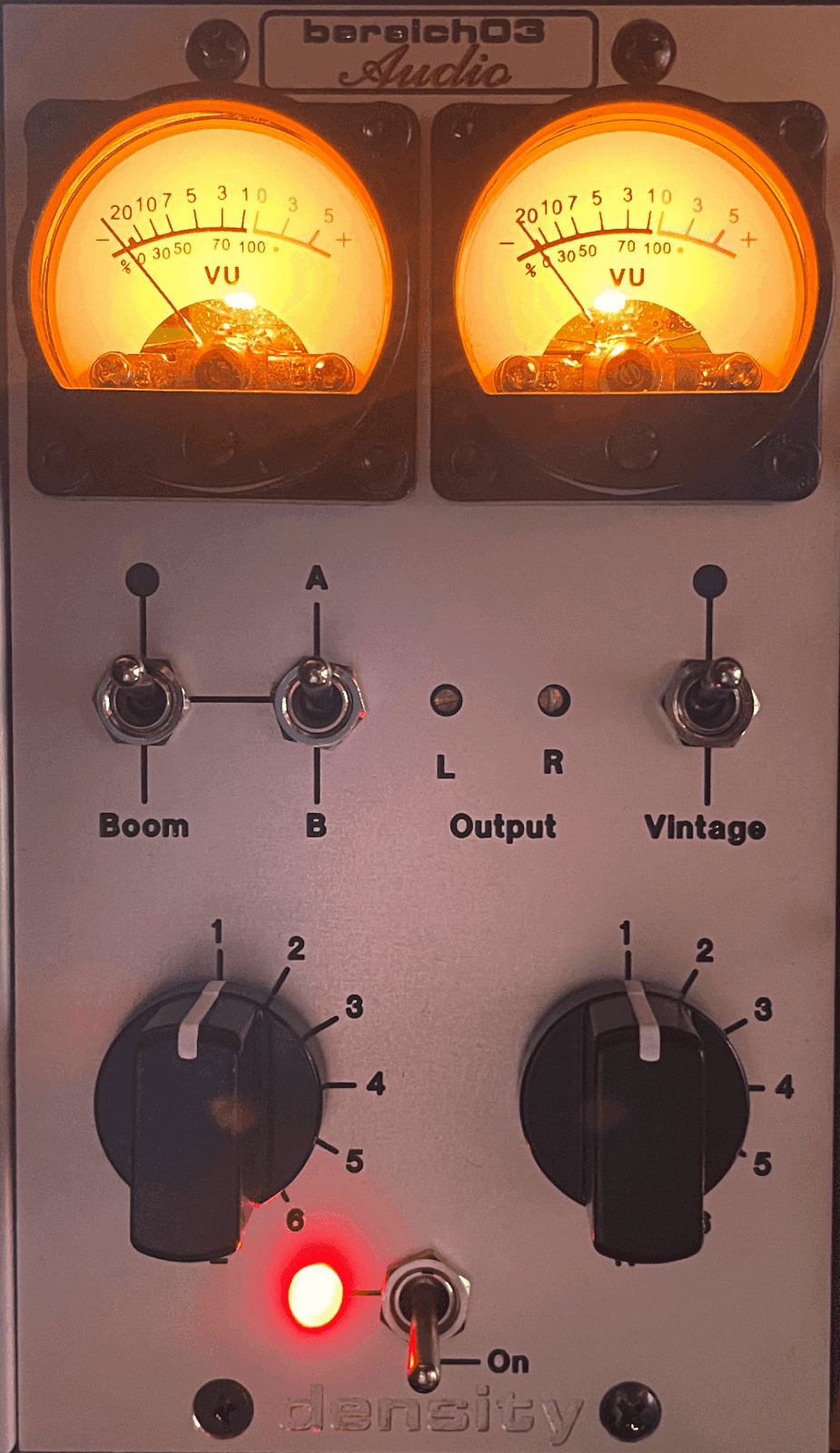
Final Compression
Before re-entering the digital realm, I hit the UBK Fatso for one last round of compression and saturation.

Audio Examples: Hear for Yourself
Original: Female Modern Jazz demo.mp3
Vintage: Female Vintage Jazz demo.mp3
Did I go overboard? Maybe. Was it fun? Absolutely! The end result is this rich, warm vocal that feels straight out of a bygone era, but with all the flexibility of modern technology. And now, this voice model is available for you to play with over on Kits.ai.
So, if you’re ready to channel your inner Billie Holiday, fire up your DAW (digital tape machine?), and inject some of that classic character into your recordings today!
-SK
Sam Kearney is a producer, composer, and sound designer based in Evergreen, CO.
